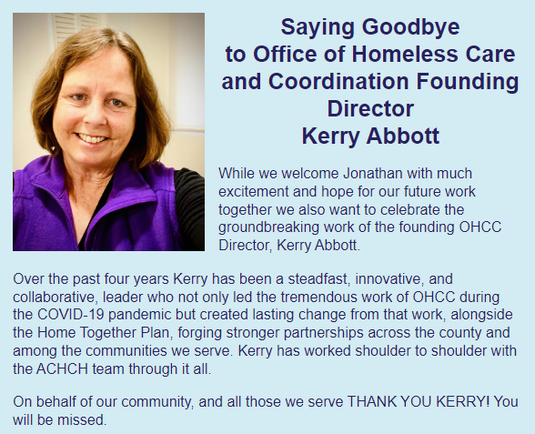Get more information about the grant here.
|
The County of Alameda will invest up to $3.5 million for local Emergency Shelter/Interim Housing Providers to maintain the current inventory of emergency shelter/interim housing beds serving unhoused residents of Alameda County through FY 24-25 by overcoming the additional costs of operation due to the Covid-19 pandemic.
Get more information about the grant here. The ACHCH quarterly newsletter is out! Read it here!
Highlights:
The ACHCH quarterly newsletter is out! Read it here!
Highlights:
 On Winter Solstice, the longest night of the year, communities across the country observed National Homeless Persons’ Memorial Day. ACHCH honored each community member who has passed away and touched our lives on Thursday, December 21, 2023. The event was a space of learning, healing, and commitment to continue our work to improve the health, and reduce preventable deaths among the people we serve. Thank you to those that joined us in honoring and celebrating the lives of those community members who passed away. View video of memorial |
Archives
July 2024
|




